In the matter of decoration design, which is neither big nor small, if there is really a way to create the highest style at the lowest cost? It must be lighting!
Due to the flexibility of light, even if the home decoration style is similar, if different lighting products or different layouts are used, the style and comfort of the space will be very different. Therefore, if we want to choose the right home light source, we must first understand the common types of home lighting sources on the market and their characteristics.
1. Common home lighting sources
Illumination source refers to the artificial light source used for lighting inside and outside buildings. Modern lighting sources mainly use electric light sources, that is, light sources that convert electrical energy into light energy. Generally, they are divided into three categories: thermal radiation light sources, gas discharge light sources and semiconductor light sources. Common product types are incandescent lamps, fluorescent lamps and LED lamps. These lamps have their own advantages and disadvantages in use, and it is very necessary to fully understand the types and characteristics of various lamps.
1. Incandescent lamp
An incandescent lamp is an electric light source that heats the filament to an incandescent state and emits visible light by thermal radiation.
Advantages: small light source, great versatility; a variety of lampshade forms and colors; good color rendering (99%~), the color light is closest to the color of sunlight; uniform spectrum, simple circuit, fast start-up, low cost and easy to use.
Disadvantages: Low energy conversion efficiency, only about 2~5% of electrical energy can be converted into visible light; short life, easily affected by vibration, rated life of about 1500 hours; not environmentally friendly, high heating temperature, high infrared component.
Application scope: home dining room, bedroom
2. Fluorescent lamp
Fluorescent lamp is a gas discharge lamp, which is the most widely used light source in industrial, commercial and home lighting.
Advantages: Energy saving, high luminous efficiency, the average luminous efficiency is above 80lm/W, about 5 times that of incandescent lamps; high lumen maintenance rate, low light decay; a variety of color temperatures are available, including warm white (3000k), white (3500k), cool white (4000k), and daylight (6500k); low cost, long life, up to 12,000 hours.
Disadvantages: Not environmentally friendly, mercury pollution during production and after use and disposal; general color rendering, about 85RA; flicker, which affects vision; large size, can only be used for basic lighting, not for accent lighting; difficult to dim, requires special drive electrical appliances; will produce electromagnetic interference.
Scope of application: public spaces such as homes, shopping malls, bars, offices, schools, supermarkets, warehouses, etc.
3. LED lamps
LED lamps, scientifically known as light-emitting diodes. They were originally used for outdoor decoration and engineering lighting, and are now gradually developing into household lighting.
Advantages: energy saving, high light efficiency, 2-3 times higher than energy-saving fluorescent lamps, 8-10 times higher than incandescent lamps; long life, theoretical life of up to 100,000 hours, 100 times that of incandescent lamps, 20 times that of fluorescent lamps; eye protection, uniform color temperature, no flicker, non-toxic and environmentally friendly, low radiation.
Disadvantages: expensive; poor heat dissipation (easy to decay if not handled properly); color loss; low power and low luminous flux.
Scope of application: traffic lighting, landscape lighting, indoor lighting
Now that we know the characteristics of different types of light sources, how can we choose the best home light source? Since different spaces have different functional divisions, the parameters and standards corresponding to their lighting environments are also different, so let's talk about home spaces!
1. Living room/living room
The living room is the main activity place for indoor homes, and requires high-quality, beautiful, and flexible lighting design. According to the "Architectural Lighting Design Standard" GB 50034-2013, the standard value of illumination is 100~300LX, and the color rendering index should be 80 Ra. The light source can be incandescent lamps or fluorescent energy-saving lamps, and the color temperature should be between 3300k and 5300k.
2. Bedroom
The bedroom is a place for rest, and the lighting should create a quiet and soft atmosphere, giving people a sense of security and comfort. Generally, the main lighting illumination is 75LX, the bedside reading illumination is required to be around 150LX, and the color rendering index is 80Ra.
3. Kitchen
The lighting in the kitchen mainly pursues simplicity and brightness. The standard value of general activity illumination is 100Lx, the standard value of operating table illumination is 150Lx, and the color rendering index is 80Ra. In addition, flat panel lights can be used for operating tables, and embedded downlights or kitchen and bathroom lights are recommended to be installed at the bottom of the wall cabinets.
4. Dining Room
The lighting in the dining room should not only enhance appetite, but also create a pleasant and harmonious atmosphere. For general basic lighting, the standard value of illumination is 150Lx, and the color rendering index is 80Ra. In order to enhance appetite, 2-3 hanging rod-down modeling lights with uniform light and illumination of about 30Lx can be selected above the dining table, and the color temperature should not be higher than 3300k.
5. Bathroom
For bathrooms, moisture-proof and easy-to-clean lamps should be preferred. The standard illumination value for general basic lighting is 100Lx, and the color rendering index is 80Ra. Incandescent lamps or high color rendering energy-saving lamps can be used as light sources for mirror lamps or side wall lamps, and the correlated color temperature should not be higher than 3300k. If it also has a makeup function, the vertical illumination at a height of 1.5 meters is required to be no less than 150Lx.
6. Aisles/entrances/staircases
The corridors and foyer mainly play a transitional role. The lighting here is generally used for a long time. In order to save energy and highlight the lighting effects of other parts of the decoration, the illumination should not be too high while ensuring safety. According to the "Building Lighting Design Standard" GB 50034-2013, the best standard illumination value is 50Lx, and the color rendering index is 60Ra.
7. Study Room
The lighting in the study room should be conducive to energetic study and work. The light should be bright and avoid glare and strobe. The theme lighting and local lighting should be combined. The color temperature of the light source is more suitable in 3300k~5300k, the illumination requirement is about 200LX, and the color rendering index is preferably 80Ra.
8. Garage
The various standard values required for the garage are the lowest compared to the thresholds of other spaces. The standard value of illumination is 30Lx and the color rendering index is 60Ra.
Finally, let me say one more thing: low color temperature light source can make red more vivid; medium color temperature light source can make blue more refreshing; high color temperature light source can make objects feel cold. In addition to considering factors such as illumination, color rendering index, no flicker, anti-glare, and high light efficiency when choosing furniture light sources, you should also pay attention to the coordination with the color matching of the indoor space. In places without special requirements, try to use light sources with high light efficiency and high color rendering index, and lamps with adjustable color temperature, energy saving and environmental protection.

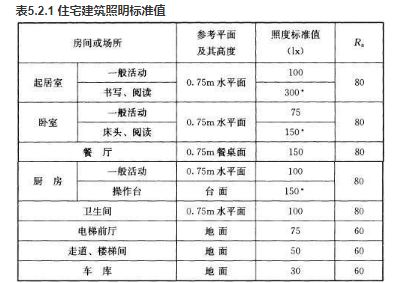
Recommended Information
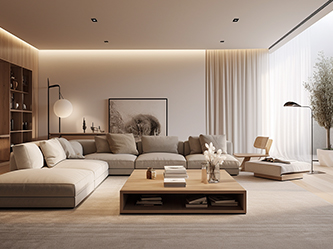
Home lighting design, how to choose the best home light source
In the matter of decoration de...
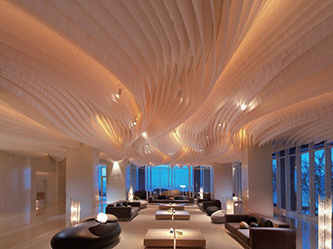
What is a cut-off light fixture?
Cut-off type lamps refer to la...
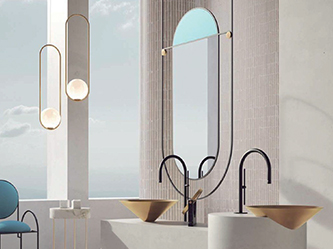
What is a mirror headlight
It is the light on the dressin...

What is a light and shadow lamp?
A light and shadow lamp is a l...
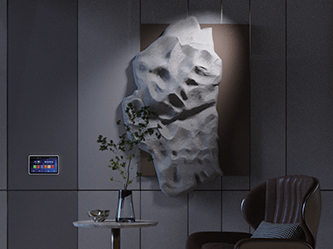
Intelligent dual color lamp: creating personalized lighting experience
1. Wireless connection technol...

What is the difference between high-efficiency soft light and uniform light?
High light efficiency soft lig...

